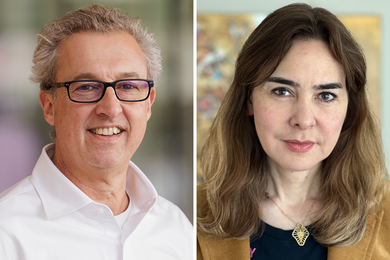Robbin Chapman (Ph.D. 2006) has joined the School of Architecture and Planning as manager of diversity recruiting, the first person ever to hold that position in the School of Architecture and Planning.Â
In announcing Chapman's appointment in February, Dean Adèle Santos said, "We have an aggressive set of goals to accomplish in this area and will need the assistance of all members of the school with this effort. I couldn't be more pleased to have someone of Robbin's caliber to lead this activity, to help meet our goals and to make enhancements to the solid foundation that many of you have worked so hard to build." Â
Q: What is your goal as manager of diversity recruiting?
A: My responsibility is to increase the faculty and graduate student pool of underrepresented minority talent. For the School of Architecture and Planning, at this point, it means African-Americans, Latinos, Chicanos, women, Native Americans and Alaskan natives.
Q: Do other schools have people in this role?
A: Yes. There are different models. But the most important thing is visibility. It needs to be clear that this person is connected at the highest level of her institution or department. This work has to be viewed as integral to everything that's done here.
Q: So you have the dean's full support.
A: Yes. Adèle wants to be clear that this effort is being supported at the highest level of the school. The School of Architecture and Planning is really serious about increasing diversity in the school, and it's about more than just counting heads. Even if you could just bring in higher numbers of people, that's not necessarily going to translate into people staying, people being satisfied, people doing well. You want to be sure you're connecting with people and talking about their entire lives here.Â
Q: How did your educational path prepare you for this role?
A: All of the time I've been at MIT I've been working with students, helping with peer counseling, listening skills, conflict resolution, stuff like that. And I've also been doing a great deal of work around diversity and diversity recruitment, separate from my graduate work.
Q: What kind of training have you directed?
A: I have taught listening skills, how to work diplomatically with students from varying backgrounds, in a way that's inclusive of everyone. Also, I have taught skills about how to teach people when they have differing ways of thinking and learning.Â
Q: That sounds like it relates to your dissertation work.
A: It does. I was interested in the different ways that people learn and how that feeds into an existing framework of learning called constructionism. Seymour Papert is the founder of that framework. It's based on the idea that people learn best when involved in building or creating something that is then made public so others can see it.
Q: And how does your new role build on that work?
A: A critical role I have played was as a community builder. I'm trying to serve in a similar role here. I don't want the fact that I'm here to signal that we can just sit back and let me take care of increasing diversity at the School of Architecture and Planning. That's not a sustainable or robust model. The point is we are all responsible for our environment. I'm going to do a lot of the legwork, but together we are going to go through the difficult process of building a community of practice around inclusion.
Q: What are the challenges ahead?
A: We all have baggage that we bring into our interactions with others. Sometimes it's difficult to unpack that baggage. But we're MIT! We're really good at figuring things out, building something new and better.
A version of this article appeared in MIT Tech Talk on March 7, 2007 (download PDF).






